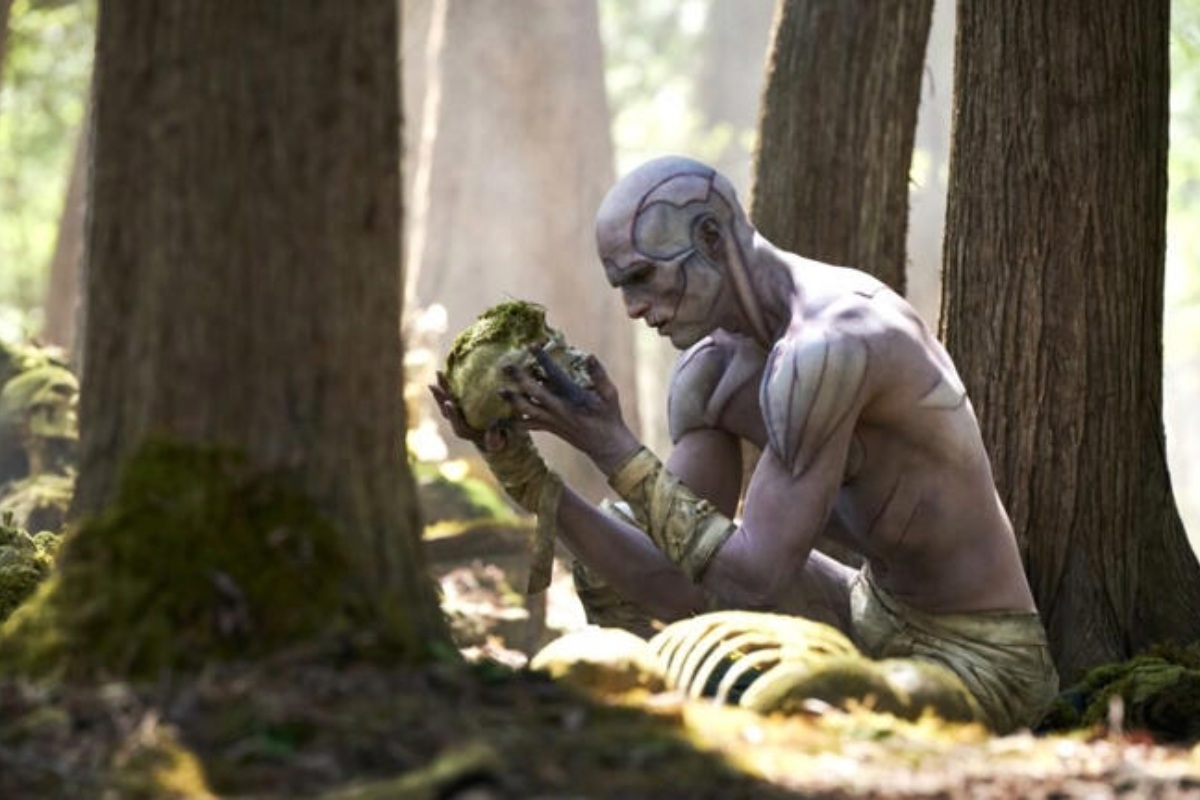What does it take to erase Jacob Elordi’s face and replace it with a myth? Inside Guillermo del Toro’s laboratory, the mask becomes a second skin and the monster looks disturbingly alive.
Ten hours in the chair, every day, and not a pixel to hide behind. To become the Creature, Jacob Elordi submits to a meticulous prosthetic build devised with master makeup artist Mike Hill, a frequent Guillermo del Toro collaborator from The Shape of Water. Their design leans into Mary Shelley’s text instead of the stitched-up movie clichés, favoring visible veins, natural hair and the trial-and-error scars of Victor’s experiment. The result is a fiercely practical creation for del Toro’s Netflix adaptation, shaped by craft more than CGI and by a performer willing to disappear inside it.
A monstrous transformation: behind Jacob Elordi’s 10-hour makeup journey
Bringing to life the infamous Creature of Frankenstein for Guillermo del Toro’s Frankenstein required a complete physical metamorphosis. For 10 hours each day, Jacob Elordi submitted to layers of prosthetics and detailed appliance work, enduring an intricate process that reshaped his face and body into a haunting yet striking vision of Mary Shelley’s creation.
Crafting the creature: a collaboration like no other
Elordi’s transformation was led by Mike Hill, a revered special effects makeup artist and longtime collaborator of Guillermo del Toro. Hill, known for his award-winning work on The Shape of Water, aimed to move past Hollywood clichés of Frankenstein’s monster and return to Shelley’s novel, revealing a being born from desperate science, both grotesque and painfully human.
The approach stood out for its painstaking detail: veins mapped beneath translucent skin, mottled flesh tones evoking a patchwork of reclaimed bodies, and tactile surfaces that read as real under camera. Every feature was sculpted by hand, with realism prioritized over digital enhancement, a consistent hallmark of del Toro’s filmmaking.
The beauty of practical effects
In an era dominated by CGI, del Toro’s choice to champion practical effects underscores his pursuit of authenticity. Portraying Frankenstein’s Creature was never about spectacle alone; it demanded a living, breathing presence that echoed Victor Frankenstein’s own manual experimentation.
The design incorporated measured details such as visible sutures, natural hair growth patterns, and period-accurate textures, anchoring the Creature in the material culture of 18th-century science rather than the realm of the supernatural. The result is craftsmanship that feels tactile and disturbingly plausible on screen.
Why Jacob Elordi was the perfect choice
Elordi’s imposing height made him an ideal canvas, but it was his willingness to endure the process and reveal emotion beneath the makeup that proved decisive. The prosthetics amplified his features to merge humanity with unease: pronounced cheekbones beneath synthetic scarring, eyes set deep yet still expressive, and movement that preserved subtlety.
According to Hill, the sessions became transformative for the actor. Despite the intensity, Elordi found a sense of freedom inside the Creature’s skin, channeling vulnerability and rage in equal measure and embodying a figure stitched together physically and emotionally, yet determined to be seen as more than a monster.
A new chapter for Mary Shelley’s legacy
Guillermo del Toro approaches Frankenstein not as a retread but as a character-driven reinvention. The film stars Oscar Isaac as Victor Frankenstein, with Mia Goth and Jacob Elordi completing a central trio that explores creation, responsibility, and the cost of playing god.
With del Toro’s storytelling rigor and Hill’s craft guiding the design, this Creature is poised to haunt audiences on Netflix, captivating for both its terrifying form and its fragile, human soul.

